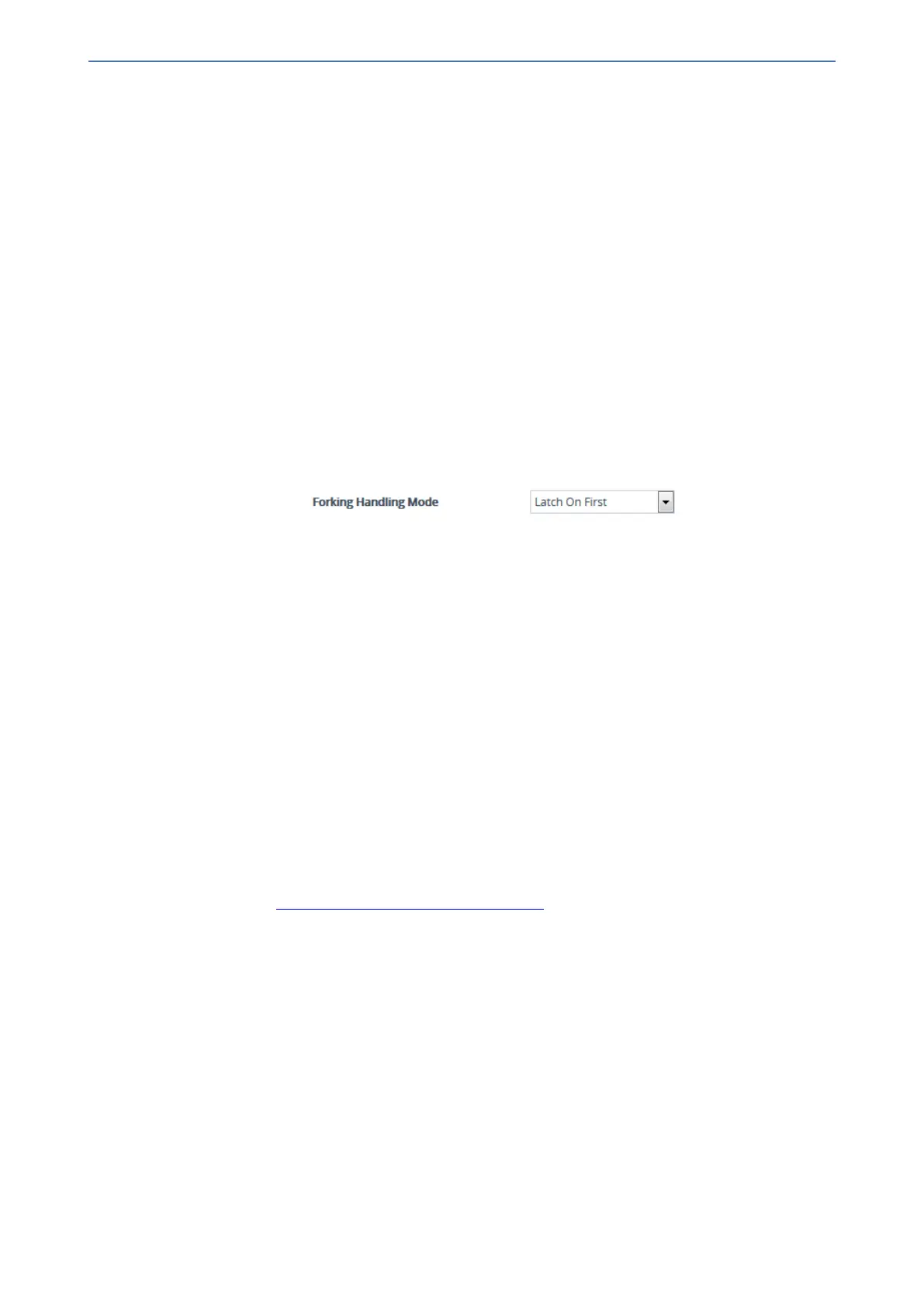CHAPTER37 Advanced SBC Features
Mediant 1000 Gateway & E-SBC | User's Manual
During call setup, forked SIP responses may result in a single SDP offer with two or more SDP
answers. The device "hides" all the forked responses from the INVITE-initiating UA, except the
first received response ("active" UA) and it forwards only subsequent requests and responses from
this active UA to the INVITE-initiating UA. All requests/responses from the other UAs are handled
by the device; SDP offers from these UAs are answered with an "inactive" media.
The device supports two forking modes:
■ Latch On First: The device forwards only the first received 18x response to the INVITE-
initiating UA and disregards subsequently received 18x forking responses (with or without
SDP).
■ Sequential: The device forwards all 18x responses to the INVITE-initiating UA, sequentially
(one after another). If 18x arrives with an offer only, only the first offer is forwarded to the
INVITE-initiating UA.
➢ To configure the call forking mode:
1. Open the SBC General Settings page (Setup menu > Signaling & Media tab > SBC folder >
SBC General Settings).
2. From the 'Forking Handling Mode' drop-down list (SBCForkingHandlingMode), select the
required mode:
3. Click Apply.
The device also supports media synchronization for call forking. If the active UA is the first one to
send the final response (e.g., 200 OK), the call is established and all other final responses are
acknowledged and a BYE is sent if needed. If another UA sends the first final response, it is
possible that the SDP answer that was forwarded to the INVITE-initiating UA is irrelevant and thus,
media synchronization is needed between the two UAs. Media synchronization is done by sending
a re-INVITE request immediately after the call is established. The re-INVITE is sent without an
SDP offer to the INVITE-initiating UA. This causes the INVITE-initiating UA to send an offer which
the device forwards to the UA that confirmed the call. Media synchronization is enabled by the
EnableSBCMediaSync parameter.
Configuring Call Forking-based IP-to-IP Routing Rules
You can configure call forking routing rules in the IP-to-IP Routing table. This is done by configuring
multiple routing rules under a forking group. These rules send an incoming IP call to multiple
destinations of any type (e.g., IP Group or IP address). The device forks the call by sending
simultaneous INVITE messages to all the specified destinations. It handles the multiple SIP
dialogs until one of the calls is answered and then terminates the other SIP dialogs. For more
information, see Configuring SBC IP-to-IP Routing Rules.
Call Survivability
This section describes various call survivability features supported by the SBC device.
Enabling Auto-Provisioning of Subscriber-Specific Information of
BroadWorks Server for Survivability
This feature enables SBC user registration for interoperability with BroadSoft BroadWorks server to
provide call survivability in case of connectivity failure with the BroadWorks server, for example,
due to a WAN failure. The feature enables local users to dial a local extension (or any other
configured alias) that identifies another local user, in survivability mode.
- 829 -

